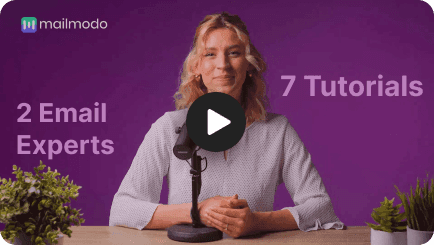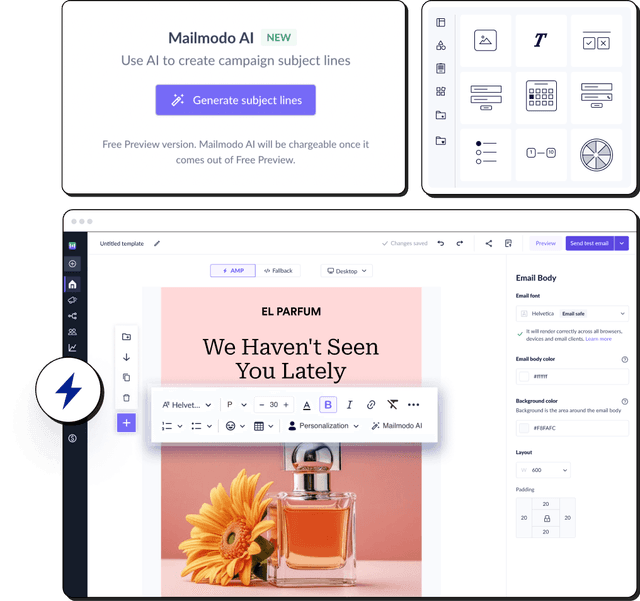What is a sunset policy in email marketing?
Sunset policy is an email list management practice where inactive subscribers are removed from an email list after a certain period. The duration for which the inactive subscribers are kept in the email list or database is defined by the company. Sunsetting can be done monthly or even quarterly.
Why is sunset policy important?
Using a sunset policy in email marketing can mainly help with improving email deliverability rates. So here we'll see what factors help improve the email deliverability rates.
• Better engagement metrics
Your emails will be sent to contacts who want to receive your emails which leads to better open and click-through rates as we have reduced the number of people who are not opening the emails.
It shows email clients that you have good engagement metrics, making them more likely to show your emails in the inbox rather than the spam folder.
• Healthy email list hygiene
Using the sunset policy, you can maintain a list with only active users and remove inactive users periodically, leading to a healthy and clean email list.
• Decrease in spam complaints
After implementing the sunset policy, people on your list are interested users, so any emails sent to them are less likely to receive spam complaints from them in the future.
How to implement a sunset policy in your email marketing strategy?
Let's discuss the actionable steps you must take to implement it:
1. Define sunset policy standards for your brand
Sunset policy is not the same for all use cases and businesses. So you need to figure out what your standards are for implementing sunset policy for your brand's email list.
- What activity do you want to track to segment your subscribers?
It can be anything like opens, clicks, responses, etc., and it's up to you to decide what works for your email marketing needs.
Opens: Opens directly affect the deliverability rate, so most people consider opens while sunsetting.
Clicks: Clicks indicate if the reader is engaging with the emails or not.
Replies: Replies are conversion-oriented and can be tracked if your brand requires people to reply to your email.
Form submissions: Companies who use AMP Emails can track form submissions to see how many people fill the forms in the email.
- For how many days will you send emails to an inactive user?
The period you should remove subscribers varies for different businesses, and it depends on how often you send emails.
For example, if you send emails monthly, you can remove users who haven't opened or engaged with your emails in 6 months.
If they don’t open in:
| Duration |
Action to be taken |
| 30 days |
Reduce the frequency to monthly emails |
| 60 days |
Reduce the frequency to quarterly emails |
| 90 days |
Send re-engagement/win-back campaign |
| 120 days |
Sunset them from your email list |
This frequency is arbitrary, and it can vary for click-through rates. So you can set the period based on your brand needs.
- What will you do with the unengaged subscribers?
Figure out if you want to send them an unsubscribe email or if you want to remove them from your list silently.
You can also remove them and put them in a separate list like a suppression list. Suppression lists can be used to store the email addresses of people who have unsubscribed, marked you as spam, and who don't open your emails.
2. Monitor your subscribers' actions
To figure out which users to remove from your email list, you need to monitor the activity of your subscribers.
Keep track of how many people are:
Track these metrics for at least 60-90 days at first to figure out if there are any other problems with your campaign.
If you already have existing data for these metrics, you don't have to wait for 60-90 days and track the metrics for the period that suits your business.
After monitoring your subscribers, you will know how many of them are actively responding and engaging with your content. Now you can move on to the next step, which is to segment your subscribers.
3. Segment your subscribers
Now that you know how many people are opening and interacting with your emails, it's time to segment them based on it.
Segment openers and non-openers into separate lists and send targeted emails for both segments.
You can send:
Observe the results from these campaigns and update your segments.
4. Remove inactive users
If your users are still not opening the emails after the number of days you had set, it's time to remove them from the list and keep them separately in a suppression list.
Conclusion
It's crucial to remember that one sunset policy does not work out in all organizations. Customize your sunset policy based on the size of your audience and the frequency with which you send emails.
If you use an email service provider like Mailmodo, you can control and implement a sunset policy for your subscribers. They provide means to segregate your audience based on their activity like opens, clicks, etc., so you can quickly complete all the processes in one place.
Sign up for Mailmodo today!









